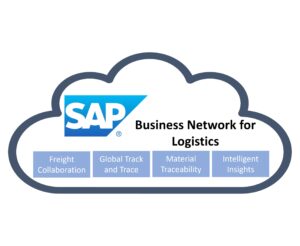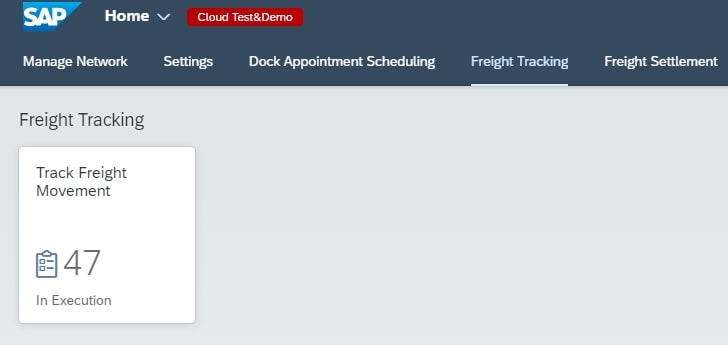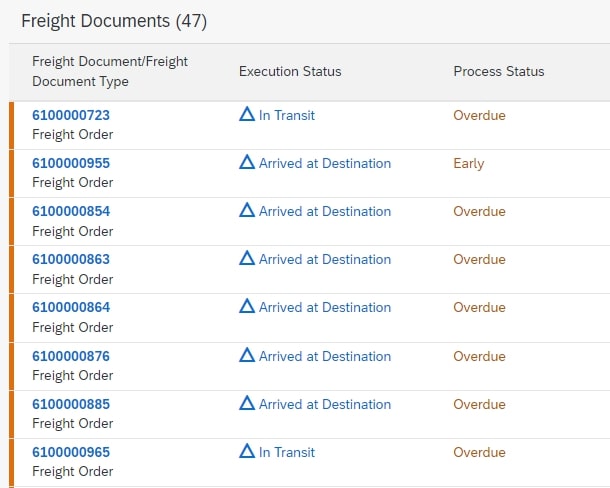
AI-Driven Application & Process Testing: Embracing Agentic Testing
Learn how Agentic AI enables digital transformation, delivering true hyperautomation.
SAP Business Network for Logistics (BN4L) is a cloud-based platform that supports companies in improved communication and seamless cross-border cooperation between the involved parties along transport processes. This article highlights its visibility capabilities.
The core capability of the Freight Collaboration (FC) module within SAP Business Network for Logistics (BN4L) is named to show the integrated way of working between business partners (e.g., through jointly managed dock management or freight cost settling). On top, it promises to add value to a so far unsolved challenge in logistics – Supply Chain Visibility (SCV).

Additionally, SAP is offering a separate tracking solution called Global Track & Trace (GTT) inside the BN4L landscape. This leaves Logistics experts with the question which solution they should use to address their needs.
Within the Freight Collaboration module various apps are available, of which the Track Freight Movement app offers visibility capabilities through various events that can be tracked and visualized on the Freight Order.

Events during transportation execution can be internal or external. Internal events are generated directly by the shipper in SAP TM or BN4L-FC, while external events are transmitted by carriers or visibility providers to BN4L, and from there to the freight order.

Within an intralogistics process, the internal events check-in and check-out as well as the start and end of loading can be generated by the shipper in BN4L or be triggered by linked processes, such as check-in in Gate Operations Management, also in BN4L.
External events, such as departure and arrival at destination, can be triggered by carriers. It is also possible to transmit documents that attach a proof of delivery with regards to freight orders with the arrival of the event.

Events and updates to freight orders run seamlessly with the respective carriers from the BN4L network, so no further manual effort is required. A process status gives additional information on the whole transportation process to e.g., identify deviations as delays quickly.

The visibility value added by the FC module is thus dependent on the coverage of your carriers within the BN4L carrier network. To increase the coverage, FC can also be powered by visibility providers such as Project44, who receive data from carriers outside of the BN4L network. The transmission of an ETA to BN4L and the regarding TM freight order and real-time tracking of a truck in the BN4L map is thereby supported. The integration of a visibility provider needs an additional license.

Global Track and Trace (GTT) is the BN4L module specialized on visibility and offers more features and functionalities than the Freight Tracking app.
The difference between GTT and FC lies mainly GTT’s higher levels of flexibility and depths of tracking details.
GTT can be accessed through a REST API. As a result, it can not only track processes from BN4L, but also directly from other applications (e.g., TM S/4 HANA or non-SAP systems).
GTT comes with a set of prefigured apps, e.g., Sales Order Fulfillment or Purchase Order Fulfillment, which already cover events and objects of standard processes. The detail level of the tracking objects can be broken down into items, e.g., delivery items. This includes also transport and process status based on visibility data, e.g., delays or fulfillment status.

These apps can easily be enhanced and tailored to custom processes and requirements.
GTT also covers milestone reporting by carriers including the license for a visibility provider. Milestones in GTT are more extensive and extendable and can be tracked multimodally. Customer-specific processes outside of the standard scenarios can be tracked transparently, even supported by a comprehensive map. An additional event-to-action logic can be implemented flexibly to trigger process automation and workflows out of GTT.
When researching both options to find out which solutions better fits your needs, the answer is probably: it depends.
Before deciding for an appropriate visibility solution, it is important to define a long-term visibility strategy along the following questions:
Answering these questions will help you assess the required tracking granularity, the necessity for process automation and workflows, and the complexity of transport scenarios and milestones.
In summary, Freight Collaboration offers standardized event-based tracking of transports which is limited to predefined events and dependent on the collaboration of the relevant carrier. Shippers without specialized expertise or capabilities in full visibility for their transport management will be able to close visibility gaps with collected visibility data in BN4L Freight Collaboration.
GTT is the more powerful and flexible tool when it comes to visibility. Beyond the pure comparison between planned and actual event dates, collected visibility data can be further processed, put into a context, and increase the level of added information and control to get from monitoring tracing to managing tracking of shipments.
Apart from the presented BN4L modules, there is nowadays a wide variety of visibility solutions and providers, each of which is more or less comprehensive or specialized for specific requirements. Curious to see how your processes can be enriched by visibility? We are here to guide you towards the next level.
If you want to know more about SAP BN4L Freight Collaboration capabilities, follow our blog series:
Maximizing the Benefits of SAP Business Network for Logistics-Freight Collaboration
Manage and Execute Dock Activities Using SAP BN4L – Freight Collaboration

Learn how Agentic AI enables digital transformation, delivering true hyperautomation.

Reimagine resilience and proactively minimize supply chain risks

This article shall help you to understand how to optimize your inventory positions in a month – or even less.

Modern PLM systems empower businesses to achieve product excellence in fast-paced markets by enhancing collaboration, agility and innovation.
© Camelot Management Consultants, Part of Accenture
Camelot Management Consultants is the brand name through which the member firms Camelot Management Consultants GmbH, Camelot ITLab GmbH and their local subsidiaries operate and deliver their services.